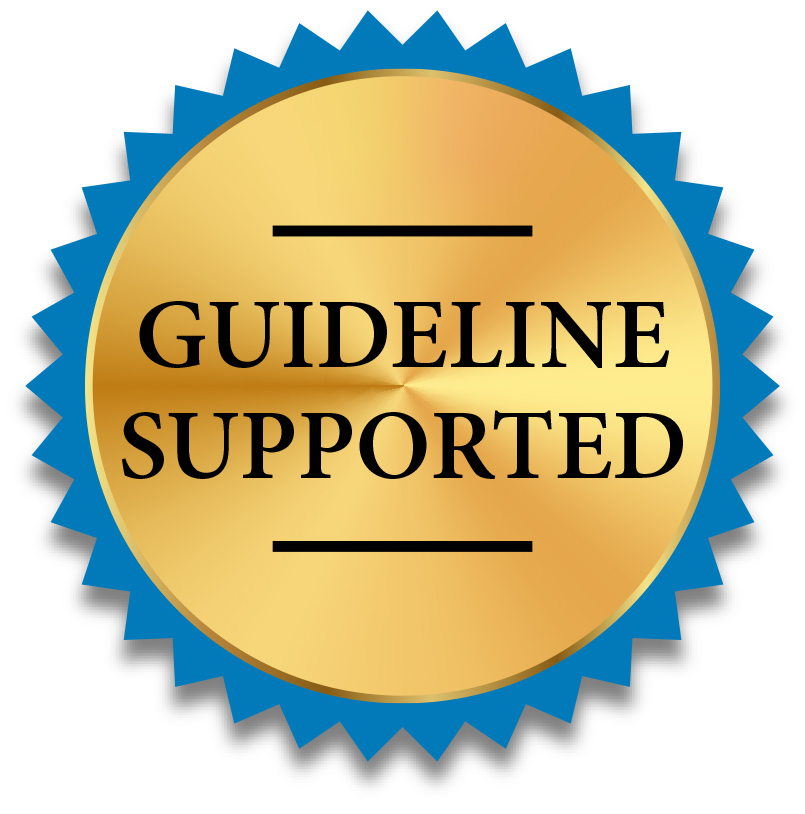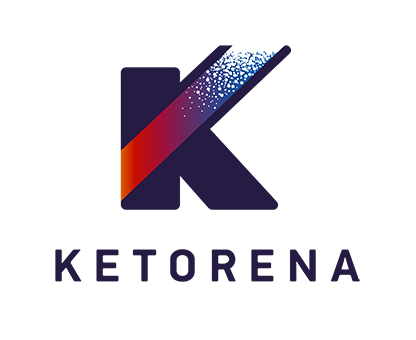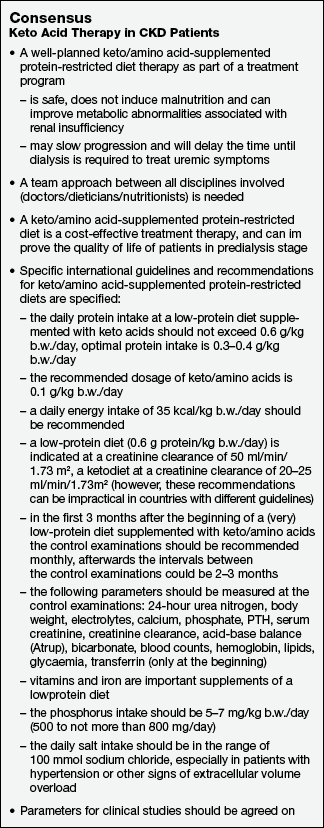Information For PhysiciansClick below to view 4 short videos presented by Dr. Elizabeth Sussman PhD RD, Associate Professor of Nutrition and Dietetics specializing in renal nutrition and research, reviewing clinical data on the use of low protein diets supplemented with keto-analogues as a tool to slow the progression of CKD and maintain nutrition. 

Low and very low protein diets supplemented with keto-analogues.The use of a low protein diet or a very low protein diet supplemented with a keto-analogue is KDOQI guideline supported and widely used for managing CKD in Europe, Asia and other parts of the world. Keto-analogue use has been limited in the United States because of its lack of availability.The use of a low protein diet or a very low protein diet supplemented with a keto-analogue has been shown to reduce CKD progression, slow the onset of uremic symptoms, and improve nutritional parameters and markers. Please see the section below titled: "Recent clinical Data on the use of keto-analogues with LPD/VLPD" for clinical references and further information. Keto-analogues of essential amino acids provide potential advantages for CKD patients. The Keto-acids in a keto-analogue lack the amino group bound to the alpha carbon of an amino acid so they can be converted to their respective essential amino acids without providing additional nitrogen. The use of a low or very low protein diet reduces the nitrogen load on the kidney as well as reducing known uremic toxins found in animal protein. The diet is the tool that may slow the progression of CKD. The keto-analogue fills in the nutritional gaps found in low and especially very low protein diets with a reduced nitrogen and uremic toxin load versus that found in animal protein or non-keto amino acid supplementation. About KetorenaKetorena is a keto-analogue of essential amino acids used in combination with a low or very low protein renal diet. The combination of the diet and the keto-analogue is designed to slow the progression of CKD and improve nutrition without kidney toxic nitrogenous waste.Each dose of Ketorena contains 2100 mg or 2.1g of Keto & Amino Acids. A low or very low protein diet is low in the essential amino acids found in animal protein. Ketorena offer the missing amino acids in keto and non-keto form to fill in the gaps. Ketorena and keto-analogues have no relation to ketogenic high fat, low carbohydrate weight loss diets. The 2020 KDOQI Clinical Practice Guideline For Nutrition in CKD. Guideline 3 Protein and Energy Intake.Protein Restriction, CKD patients not on dialysis and without diabetes
Low protein diet or very low protein diet supplemented with a keto-analogue
Considerations of metabolically stable In the context of these recommendations, metabolically stable indicates: Find the full guideline here: KDIGO 2020 Nutrition in CKD guideline Renal Dietitian Resources for PatientsA list of Renal Dietitians trained in counseling patients on low and very low protein diets is available on the patient page of this site.Counseling is offered as both individual sessions or as online group programs. Ketorena DosingThe starting dose of Ketorena is 1 scoop or 3 tablets 3 times daily when initiating a very low protein diet. Maintenance dosing for Ketorena is individualized based on the level of protein restriction and patient body weight.Please review the dosing and treatment protocol below from the IKABM. The dosing recommendations are to initiate a keto-analogue at 0.1g/kg BW/day. A patient weighing 60kg would then take 0.1g x 60 = 6g or 6000mg. 1 scoop of Ketorena = 2100mg or 2.1g. 3 scoops = 6300mg or 6.3g. The dose would then be 1 scoop or 3 tablets 3 times daily. Patient types who may benefit from a low or very low protein diet supplemented with Ketorena:
The following beneficial effects may be found with a keto-analogue supplemented protein restricted diet:
The International Keto Analogue Board Meeting (IKABM) consensus statement on the
|

